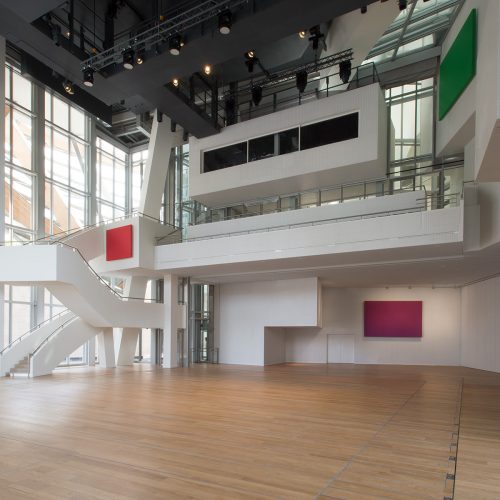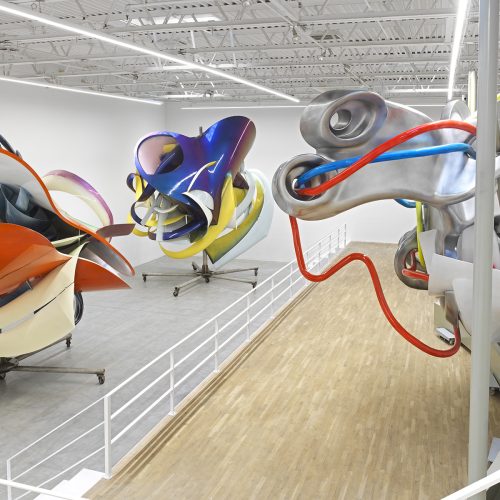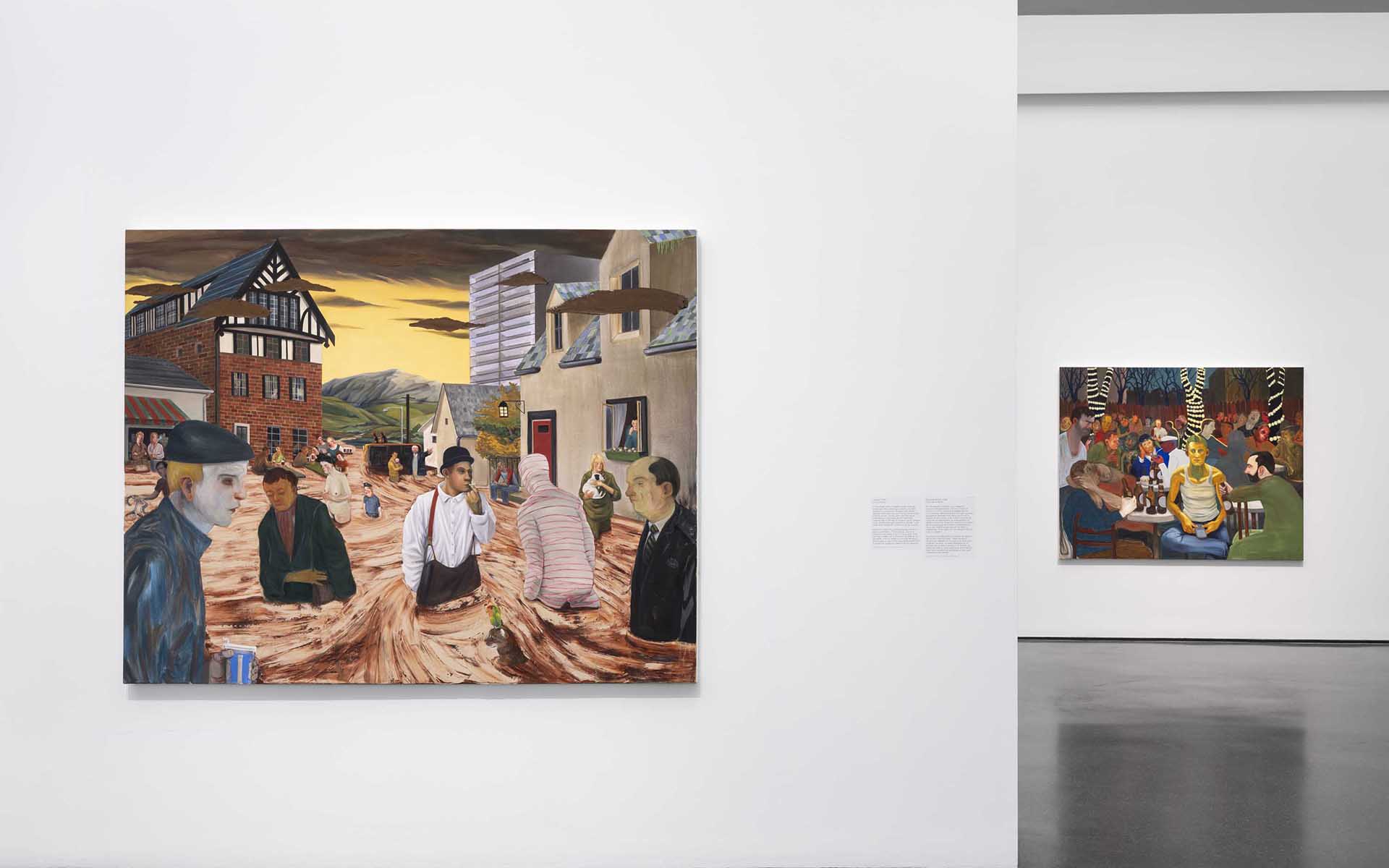

Artist Nicole Eisenman’s First Major Museum Survey Arrives in the U.S.
Over 100 works from the Brooklyn-based artist’s career are on view at MCA Chicago through September 22
Viewing Nicole Eisenman’s work can be an unsettling experience. Not because of the use of vivid color. Not because of the whimsical recurring characters. And not because of their varying forms and sizes. What makes a viewer shift in their stance is the feeling of being seen in her canvases, where themes of loneliness, belonging, and queerness unapologetically converge.
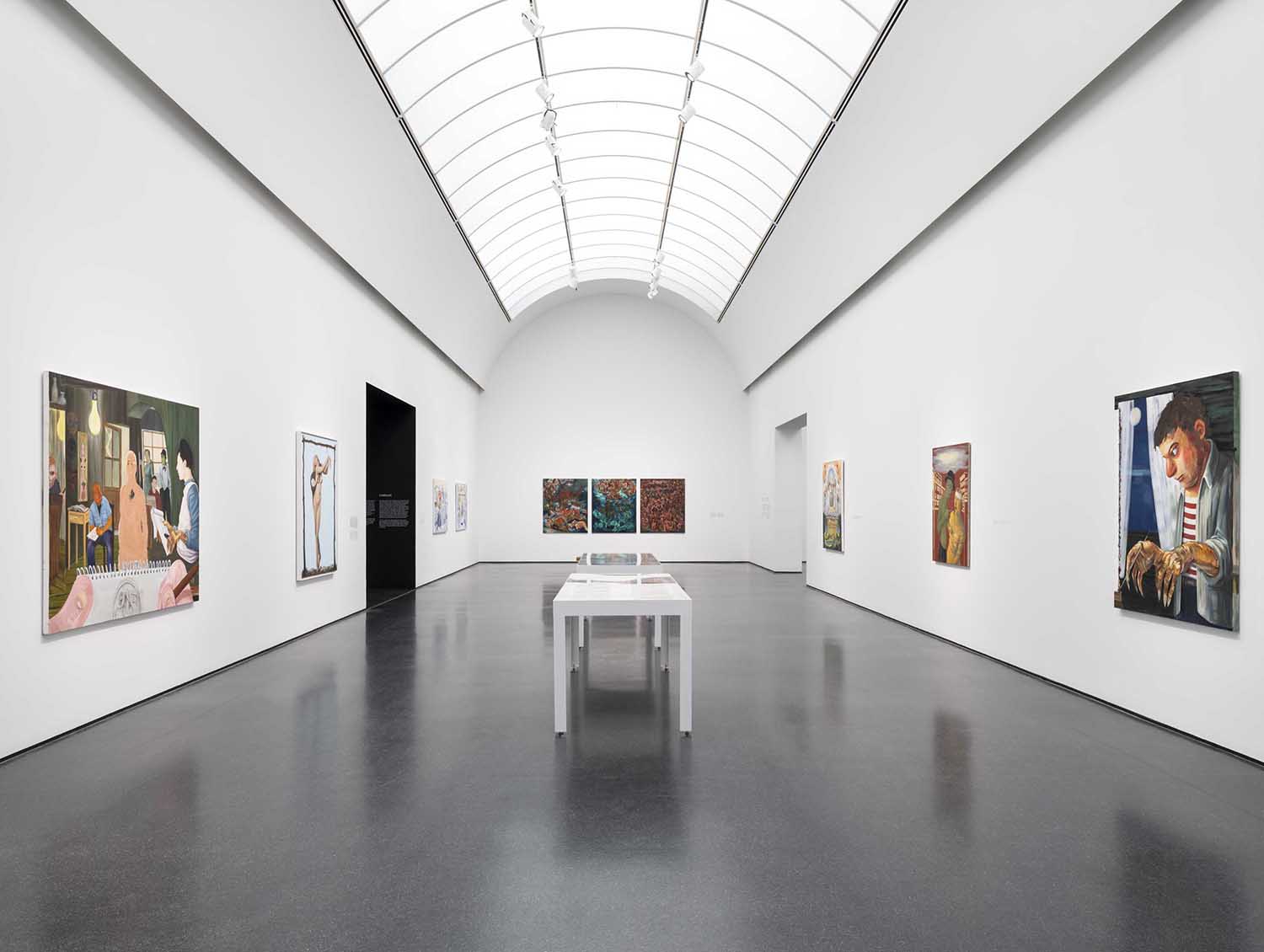
Installation view of "Nicole Eisenman: What Happened" at MCA Chicago. Photo: Shelby Ragsdale; Courtesy of MCA Chicago
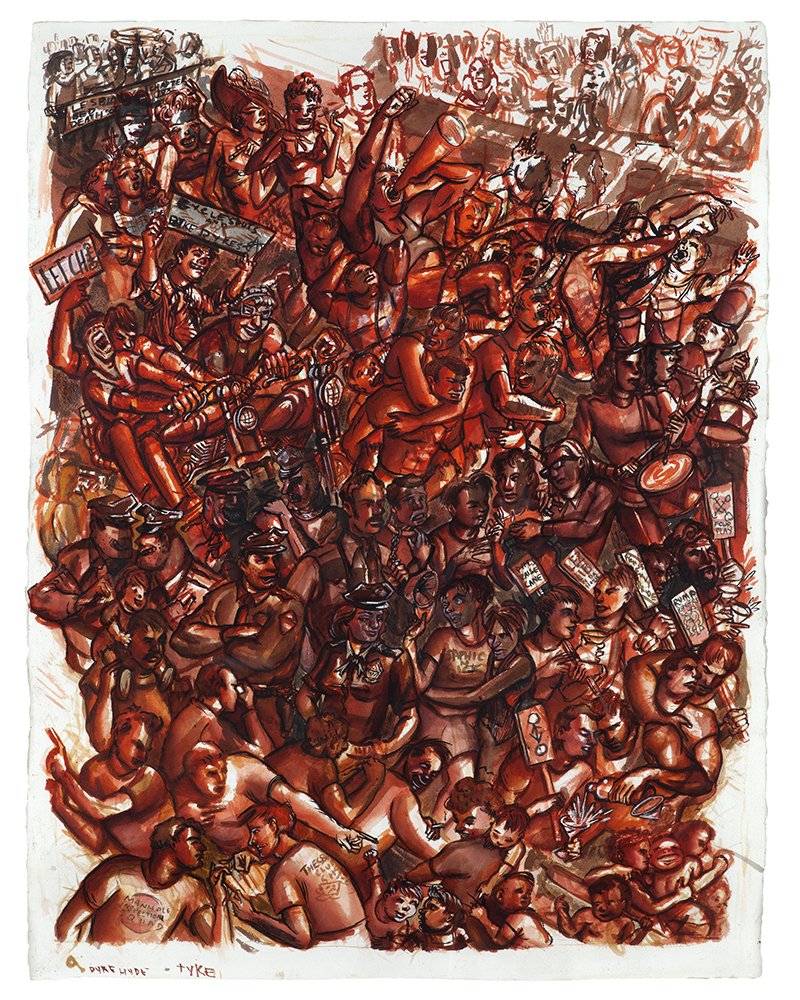
Nicole Eisenman Dyke, Hyde, Tyke, (1994). Photo: Hort Family Collection
Following showings in Europe, at Museum Brandhorst in Munich and Whitechapel Gallery in London, “Nicole Eisenman: What Happened” stands as the first comprehensive survey of the French-born artist. Now open through September 22, the show is making its sole U.S. showing at Museum of Contemporary Art Chicago, where over 100 works dating back from 1992 to 2023 chronicle the progression of the Brooklyn-based artist’s career. Inspired by her deep roots in activism, the exhibition begins through an examination of her inspiration from the Renaissance period as well as early work in murals, which chronicle politically-minded subjects such as lesbian women’s liberation with cheeky Easter eggs hidden in signage, expressions, and background characters.
“I’m hoping that in the show you can see a growth throughout her practice from the early works, which are very much tied to the northern Renaissance approach,” MCA Chicago associate curator Jadine Collingwood tells Galerie. “Then there’s a shift where she gets much freer and starts drawing in a lot of different styles within a single work.”
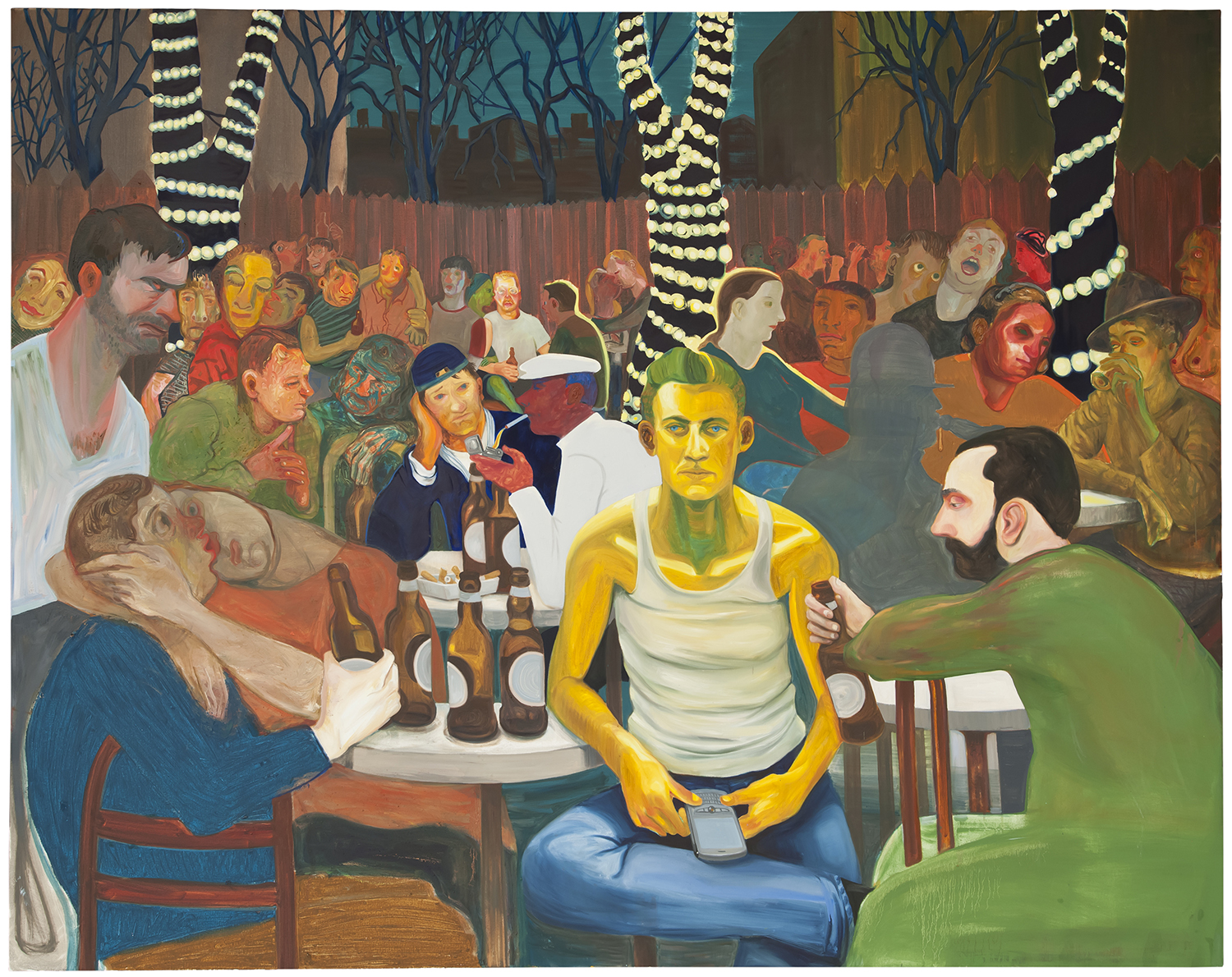
Nicole Eisenman, Beer Garden with AK, (2009). Photo: De Ying Foundation
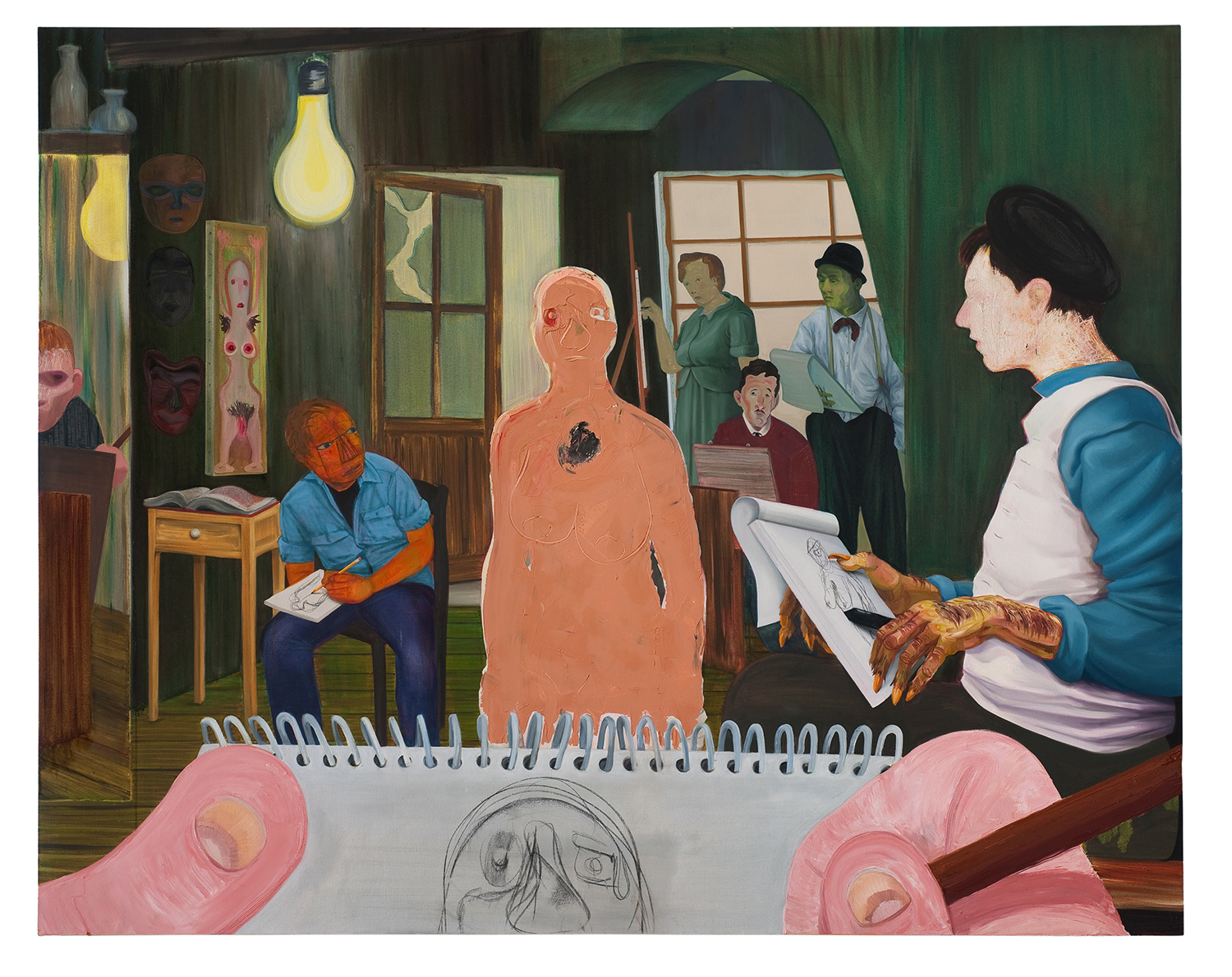
Nicole Eisenman, The Drawing Class, (2011). Photo: The Art Institute of Chicago, Gift of Society for Contemporary Art
Going deeper into the exhibition, Eisenman’s small and large-scale canvases adorn the museum’s walls, where her trademark whimsical figures are introduced to audiences through environments ranging from bustling pubs to personal bedrooms. A number of the artist’s paintings depict social settings, where crowds typically gather around one central character washed in vivid color. Despite the rowdy atmosphere, feelings of isolation and loneliness practically seep from the canvases, as seen in artworks such as The Drawing Class (2011) and Beer Garden with AK (2009), but in nearly all of Eisenman’s work, there’s something to pull you back into fantasy.
“When you’re looking at a figure, you can feel a sense of distance, but there’s always something else to laugh at because she doesn’t take it too seriously,” says Collingwood. “So even when someone is staring off and with this really kind of despondent gaze, they’re holding a blackberry in their hand. So it kind of pulls you out of that seriousness of the moment.”

Installation view of "Nicole Eisenman: What Happened" at MCA Chicago. Photo: Shelby Ragsdale; Courtesy of MCA Chicago

Installation view of "Nicole Eisenman: What Happened" at MCA Chicago. Photo: Shelby Ragsdale; Courtesy of MCA Chicago
While Eisenman may be best known for her work on canvas, this encompassing exhibition additionally presents her work in other media. In one gallery, a towering Marsden yellow crane takes over the space, where a bronze cat head is attached—a nod to her cat Edie. Later in the show, additional sculptures and works on paper as part of her previous “Heads, Kisses, Battles” exhibition showcase the full breadth of the artist’s practice.
As the sole United States venue for this sweeping exhibition, the museum also displays a handful of recent works by Eisenman that had yet to be shown as part of the exhibition. In large-scale canvases, showcasing pivotal historical moments including Black Lives Matter protests in her 2020-21 work The Abolitionists in the Park, viewers who look closely can even spot the artist herself as one of the figures, serving as a reminder that so much of Eisenman’s work is self-reflective as it is confrontational.
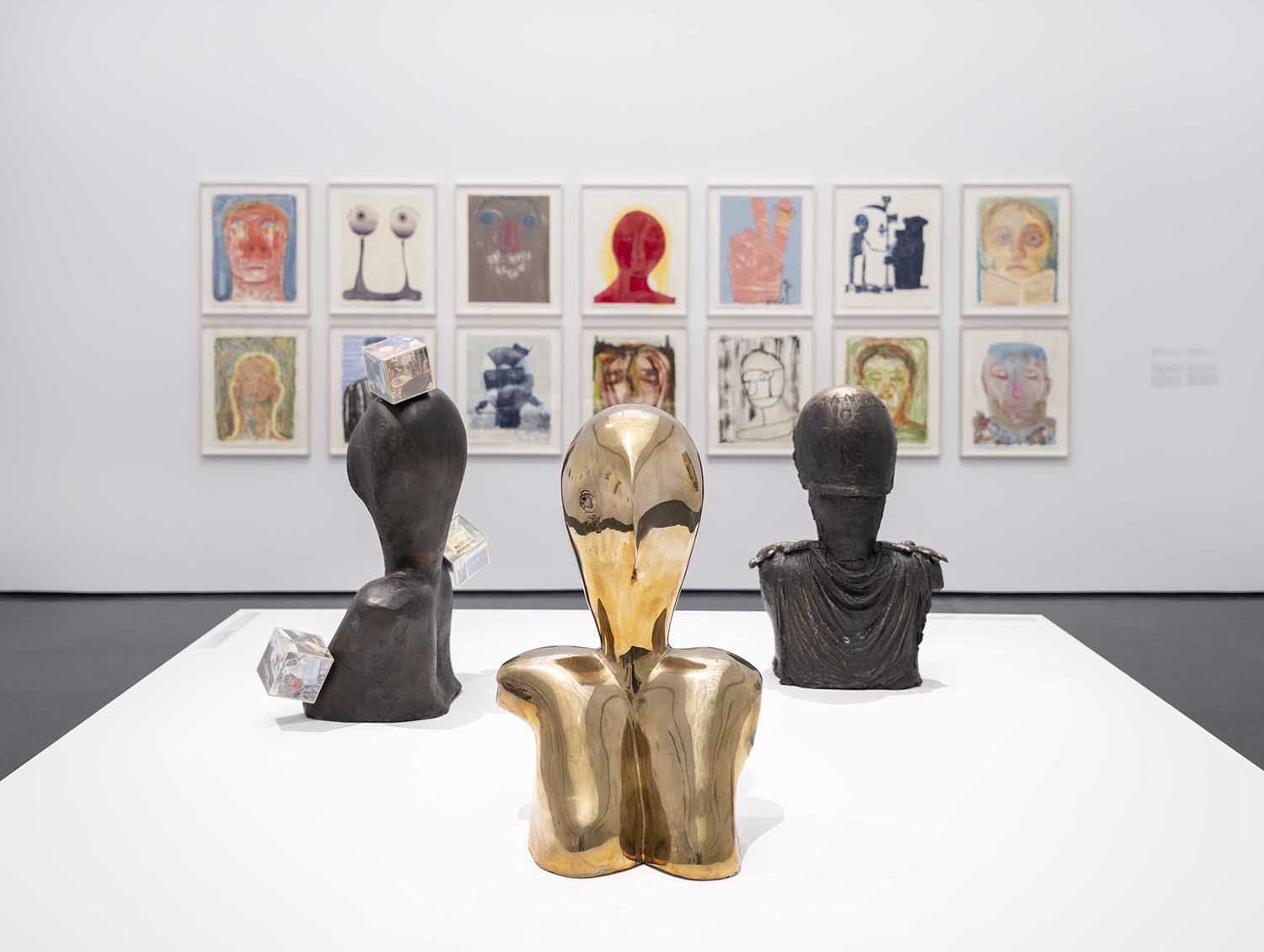
Installation view of "Nicole Eisenman: What Happened" at MCA Chicago. Photo: Shelby Ragsdale; Courtesy of MCA Chicago
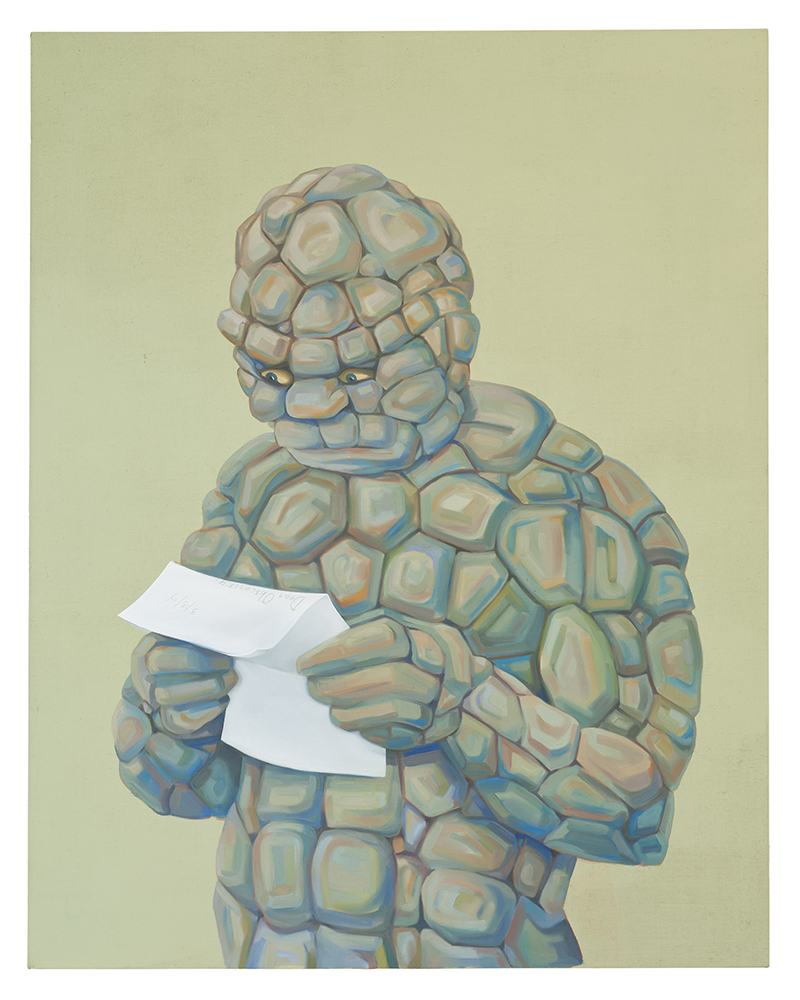
Nicole Eisenman, From Success to Obscurity, (2004). Photo: Hall Collection
“Nicole Eisenman: What Happened” is on view at the Museum of Contemporary Art, Chicago through September 22.

